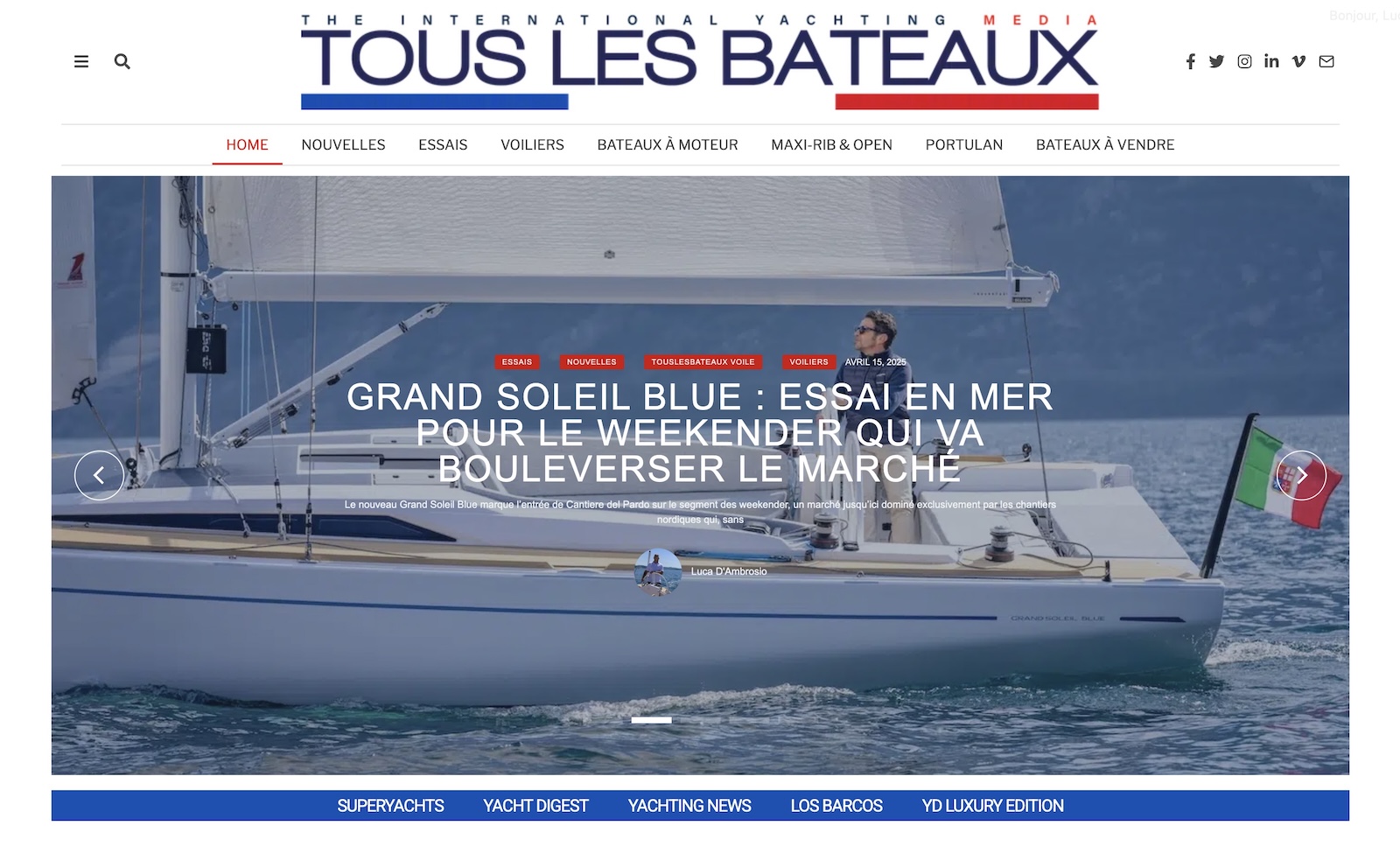
The three Mistral days spent in Santa Teresa di Gallura definitively helped us to complete some on-going tests, especially that on the mooring lines and halyards Gottifredi Maffioli had given us a few days before our departure.
The fresh breeze that had forced us to extend our stop indeed enabled us to replace the gangway halyard, make the empirical measurements for the final test results and test our mooring lines. The latter, in particular, were subjected to an odd but efficient treatment, the results of which are exposed below. Anyway, first things first..
Gottifredi Maffioli Softech Halyard

The halyard we’ve received is a Gottifredi Maffioli Softech 10 mm one. With double braid, a Dyneema core and a polyester cover, it has a tensile strength of 4,350 Kg.
What we want to test is if this halyard is really able to deliver a lower stretch compared to an older polyester 12 mm double braid we’ve used so far for our gangway (since its diameter is larger than that of the product we’re examining).
Our test will be empirical, so with concrete results and precise measurements.
First of all, the system of trapeze harness and lines of our Carbonautica gangway (we’ll tell you the relative test in the next few days) features a considerable elasticity but, assuming that it won’t change during the two measurements we’re going to make, its performance won’t affect our test results at all.
The person who will climb on the gangway weights 75 kg and is positioned on the same point of the gangway at the time of the measurements. The length of the two halyards, from the stopper to the gangway trapeze, is equal to 40 metres.
Test results

As we can clearly see from the data above, the saving in terms of stretching is considerable, especially if we consider that the diameter of the new halyard (10 mm) is 20% lower than the original halyard’s one (12 mm).
If we wanted to further improve the system, it would be appropriate to replace the standard lines of our gangway with some Dyneema ones. Both sturdiness and stability would be significantly greater this way.
Furthremore, if we consider the most common use of the halyard, the use of these lines would result into two interesting advantages.

The first concerns a reduction in the halyard diameter; this way, it will be easier to hoist and lower since everything will be lighter and smoother.
The second advantage results into an easier adjustment of the sails’ head-ropes without the typical annoying spring effect in strong winds. With less grease, our sail will be more performing and, above all, more stable even in gusts.
Many products are often considered to be specific for sailing competitions; on the contrary, they deliver unexpected results in terms of comfort and safety even when cruising but we’ll discuss this later..
| Original measure | Under-load measure | Difference | |
| Polyester double-braid halyard (12 mm) | 66.5 | 21.6 | 44.9 |
| Gottifredi Maffioli Softech halyard (10 mm) | 64.5 | 30.0 | 34.5 |
| Strecthing difference | 10,4 |
Gottifredi Maffioli Maxidock mooring lines
As already said in a previous article, the company 
The main qualities these line are expected to ensure are three: elasticity, abrasion resistance and easy handling. In short, they must be “soft” even after salt exposure and several tractions.
In order to test their real salt exposure capacity, we’ve decided to drop the lines into the sea and tow them for some miles. Then, we’ve left them drying so that the salt could penetrate stitches.
After this treatment, we’ve used them “normally” for our moorings in the ports and anchorages where we’ve 
We intentionally picked up mooring buoys incorrectly, that is by letting the line pass through the mooring buoy ring and attaching it to the two side bow cleats. This way, stressed by the movements of the boat reacting to the wind, the line continuously rubs against the inner part of the ring.
All mooring manoeuvres in the ports have been performed with one of the two lines loosened so that only one was stressed.
In short, we’ve put them through the mill. However, the best part of the game came on August 11st, when mistral gave its best in the Strait of Bonifacio.
Our Daydreamer was docked with the stern to the mistral, a perfect position for out test purposes; of course, the line in traction was only one.
Test results
Lines are highly elastic under any condition. Our Daydreamer was always stable even in gusts. When mistral stopped, we retrieved (we had to sail off) and analyzed them.
They show no sign of abrasion and, despite the great salt exposure they’ve suffered from, they are still very soft.
The only, not significant, signs are those shown in the pictures of the article.
The Gottifredi Maffioli Maxidock mooring lines have successfully passed the test. If you want to see them with your own eyes, you can visit us during our summer cruise or during the Genoa Boat Show at the Marina Porto Antico, where our Daydreamer will open her doors to our readers.

























